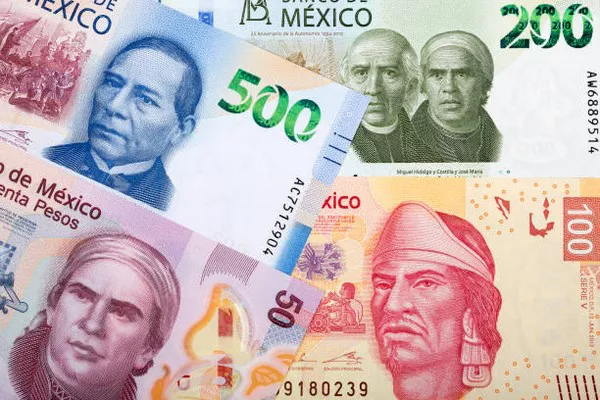The currency markets are dynamic, influenced by an array of economic indicators, geopolitical events, and market sentiment. Among the currencies attracting attention is the Mexican Peso (MXN), prompting a closer examination of the factors contributing to its recent strength. In this article, we delve into the economic landscape, policy decisions, and global influences that have shaped the Mexican Peso’s trajectory, shedding light on whether its current robust performance is sustainable.
I. Economic Fundamentals:
To comprehend the Mexican Peso’s strength, it is crucial to assess the underlying economic fundamentals. Mexico, as one of the world’s largest economies, is intricately linked to global trade, particularly with its significant trading partner, the United States. The country’s economic health, therefore, is intertwined with the broader international economic context.
Trade Balance:
The Mexican Peso’s strength often correlates with the country’s trade balance. Mexico has been actively engaged in international trade, particularly with the U.S., which is its largest trading partner. A positive trade balance, where exports exceed imports, contributes to a stronger Peso. Analyzing recent trade data and trends provides insights into the currency’s current trajectory.
Foreign Direct Investment (FDI):
Foreign Direct Investment plays a pivotal role in supporting a currency. Robust FDI inflows signal confidence in the Mexican economy, leading to an increased demand for the Peso. Assessing the FDI trends and the sectors attracting investment offers valuable insights into the currency’s strength.
Economic Indicators:
Monitoring key economic indicators such as GDP growth, inflation rates, and unemployment provides a comprehensive view of Mexico’s economic health. A growing economy with stable inflation and low unemployment is conducive to a strong domestic currency.
II. Monetary Policy and Central Bank Actions:
The monetary policy decisions of the central bank, Banco de México (Banxico), play a crucial role in shaping the Mexican Peso’s strength. Central banks worldwide employ various tools to achieve their objectives, and understanding Banxico’s approach is fundamental to assessing the Peso’s trajectory.
Interest Rates:
Interest rates are a key determinant of a currency’s strength. Higher interest rates attract foreign capital seeking better returns, leading to an appreciation of the domestic currency. Analyzing Banxico’s recent interest rate decisions and forward guidance provides insights into the Peso’s current positioning.
Central Bank Interventions:
Central banks often intervene in currency markets to stabilize or influence their currencies. Assessing whether Banxico has engaged in interventions and the nature of such actions is crucial for understanding the factors influencing the Peso’s strength.
III. Global Factors Impacting the Mexican Peso:
The global economic landscape, geopolitical events, and external shocks can significantly influence currency movements. The Mexican Peso is not immune to these external factors, and examining their impact provides a holistic view of the currency’s strength.
Global Economic Conditions:
The health of the global economy influences investor sentiment and risk appetite. In times of global economic uncertainty, investors may seek safe-haven currencies, impacting the strength of emerging market currencies like the Mexican Peso. Analyzing current global economic conditions is essential for gauging the Peso’s resilience.
Geopolitical Events:
Geopolitical events, such as trade tensions, political instability, or diplomatic developments, can impact currency markets. Considering Mexico’s geopolitical relationships and the potential ramifications on the Peso provides valuable insights.
IV. Market Sentiment and Speculative Activity:
Currency markets are influenced by market sentiment and speculative activities. Traders and investors react to news, economic data releases, and trends, contributing to short-term fluctuations in currency values. Examining market sentiment and speculative positioning is essential for understanding the Mexican Peso’s current strength.
Speculative Positions:
Assessing the positioning of speculative traders in the currency futures market provides insights into market expectations. Understanding whether traders are betting on Peso appreciation or depreciation offers valuable clues about the prevailing sentiment.
News and Events Impacting Sentiment:
News and events, both domestic and international, can trigger shifts in market sentiment. Monitoring recent news and events that may have influenced trader sentiment is crucial for comprehending the factors driving the Peso’s strength.
V. Future Outlook and Challenges:
Looking ahead, it is essential to consider the potential challenges and opportunities that may impact the Mexican Peso. Anticipating future developments requires a careful analysis of ongoing trends and emerging factors that could shape the currency’s trajectory.
Trade Relations and Agreements:
Given Mexico’s reliance on international trade, developments in trade relations and agreements, particularly with the United States, can have a significant impact on the Peso. Analyzing ongoing negotiations and potential trade policy changes provides insights into future currency movements.
Economic Reforms and Policy Initiatives:
Government policies and initiatives, including economic reforms, can influence investor confidence and the currency’s strength. Examining the government’s stance on economic policies and potential reforms offers a glimpse into the Peso’s future outlook.
Pandemic Recovery and Global Economic Trends:
The aftermath of the COVID-19 pandemic and global economic trends will continue to shape the trajectory of the Mexican Peso. Assessing the pace of recovery, vaccination efforts, and shifts in consumer behavior provides valuable context for predicting the currency’s future performance.
See Also: 12 Surprising Facts About the Mexican Peso
Conclusion:
In conclusion, the strength of the Mexican Peso is a nuanced interplay of economic fundamentals, monetary policy decisions, global influences, market sentiment, and future outlook. As we navigate the complexities of the currency market, a comprehensive analysis of these factors is crucial for gaining a deeper understanding of the forces shaping the Peso’s current position and its potential trajectory in the dynamic world of international finance.


